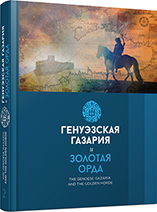Средневековые поселения на территории Донецких степей
Medieval Settlements on the Territory of Donetsk Steppes
Author(s): Eduard E. Kravchenko
Subject(s): History, Archaeology, Historical Geography, Middle Ages, 6th to 12th Centuries, 13th to 14th Centuries, 15th Century
Published by: Издательский дом Stratum, Университет «Высшая антропологическая школа»
Keywords: Severskiy Donets river; Donetsk ridge; Azov Sea region; fortified settlements; settlements; roads; centers
Summary/Abstract: The work considers the history of medieval settlements in the steppe between the Dnieper and the Don. It includes the lands of the Donetsk Ridge, the Northern Azov Sea, and the buffer zone between the steppe and the forest-steppe in the middle reaches of the river Severskiy Donets. Steppe open spaces throughout the Middle Ages were the habitat of nomads. In periods of stability, when these lands were part of large state entities, settlements appeared on some of their plots near roads. These roads crossed the steppes in the latitudinal direction, which was connected with the cultural ties of the region, in which the Crimea, the Northern Caucasus and the Lower Dnieper Basin played a prominent role.In the buffer zone, settlements existed during the entire Middle Ages. In the Khazar and Golden Horde times large trade and craft centers grew in the contact zone between the steppe and the forest-steppe. In these settlements, there was also an administration that led the life of the nomadic steppe. The defeat at the end of the 14th century led to the complete collapse of the settled way of life in the region, after which nomadic hordes dominated the lands for two centuries.In this way, the natural factor, cultural and economic traditions, the existence of trade communications and the political situation played an important role in formation of medieval settlements in the Donetsk steppes. The most developed regions were those with long-standing traditions of settled life style.
Book: Генуэзская Газария и Золотая Орда
- Page Range: 669-690
- Page Count: 22
- Publication Year: 2019
- Language: Russian
- Content File-PDF

